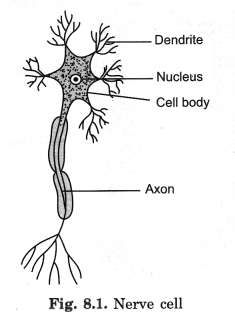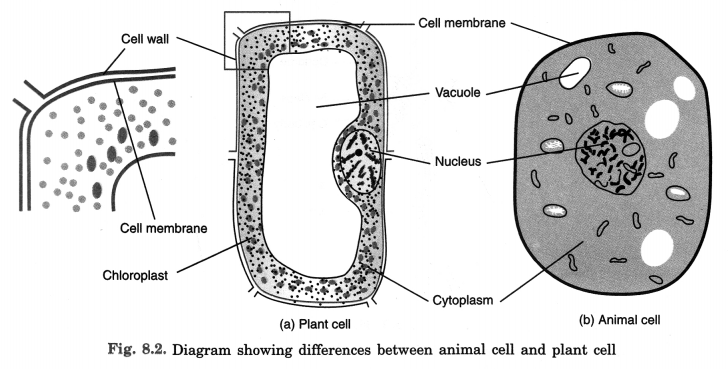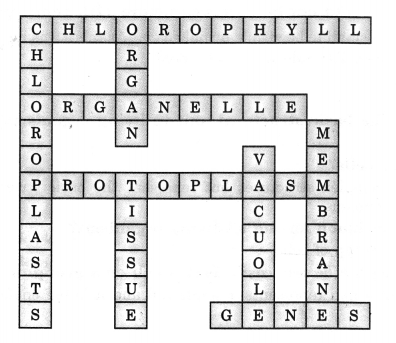NCERT Solutions | Class 8 Science Chapter 8 | Cell Structure and Functions

CBSE Solutions | Science Class 8
Check the below NCERT Solutions for Class 8 Science Chapter 8 Cell Structure and Functions Pdf free download. NCERT Solutions Class 8 Science were prepared based on the latest exam pattern. We have Provided Cell Structure and Functions Class 8 Science NCERT Solutions to help students understand the concept very well.
NCERT | Class 8 Science
| Book: | National Council of Educational Research and Training (NCERT) |
|---|---|
| Board: | Central Board of Secondary Education (CBSE) |
| Class: | 8th |
| Subject: | Science |
| Chapter: | 8 |
| Chapters Name: | Cell Structure and Functions |
| Medium: | English |
Cell Structure and Functions | Class 8 Science | NCERT Books Solutions
NCERT TEXTBOOK EXERCISES
ncert class 8 science Chapter 8 notes, Question 1.
Indicate whether the following statements are True (T) or False (F):(a) Unicellular organisms have a one-celled body. (T/F)
(b) Muscle cells are branched. (T/F)
(c) The basic living unit of an organism is an organ. (T/F)
(d) Amoeba has an irregular shape. (T/F)
ncert class 8 science Chapter 8 question answer, Answer :
(a) True(b) True
(c) False
(d) True.
NCERT Science book Class 8 Solutions PDF free download, Question 2.
Make a sketch of the human nerve cell. What function do nerve cellsperform?
cbse science class 8 solutions, Answer :

The nerve cell receives and transfers messages, thereby helping to control and coordinate the working of different parts of the body.
ncert science class 8 book, Question 3.
Write short notes on the following:- Cytoplasm
- Nucleus of a cell.
ncert class 8 science Chapter 8 question answer, Answer :
- It is the jelly-like substance found between the nucleus and the cell membrane. It contains the nucleus and many small structures called organelles. Cytoplasm, along with nucleoplasm, forms the living substance of the cell, called the protoplasm.
- It is an important component of the living cell. It is generally spherical and located in the center of the cell. The Nucleus is separated from the cytoplasm by a membrane called the nuclear membrane. The liquid substance of the nucleus is termed nucleoplasm. There is a smaller spherical body in the nucleus which is called the nucleolus. The Nucleus also contains thread-like structures called chromosomes. These carry genes and help in inheritance. The Nucleus acts as the control center of the activities of the cell.
With a microscope of higher magnification, we can see a smaller spherical, dense body in the nucleus. It is called the nucleolus. In addition, the nucleus contains thread-like structures called chromosomes. These carry genes and help in the inheritance or transfer of characters from the parents to the next generation. The chromosomes can be seen only when the cell divides. The nucleus, in addition to its role in inheritance, acts as the control centre of the activities of the cell.
ncert science class 8 Chapter 8, Question 4.
Which part of the cell contains organelles?cbse science class 8 solutions, Answer :
The Cytoplasm contains organelles of the cell.ncert science class 8 pdf free download, Question 5.
Make sketches of animal and plant cells. State three differences between them.ncert class 8 science Chapter 8 question answer, Answer :
| Plant cells | Animal cells |
|
1. The outermost covering is cell wall which is made of cellulose. 2. Plastids (e.g., chloroplasts) are present. 3. Large vacuoles are present. |
1. The outermost covering is the plasma membrane which is living material. 2. Plastids are absent. 3. No or small vacuoles Eire present. |

ncert science class 8 solutions, Question 6.
State the difference between eukaryotes and prokaryotes.cbse science class 8 solutions, Answer :
| Eukaryotes | Prokaryotes |
| 1. Nucleus of the cell has a nuclear membrane. | 1. Nucleus is not bounded by a membrane. |
| 2. Possess membrane-bound organelles. | 2. Membrane-bound organelles are absent. |
| 3. Examples include all higher plants and animals. | 3. Examples are bacteria and blue-green algae. |
ncert science class 8 textbook pdf, Question 7.
Where are chromosomes found in a cell? State their functions.ncert class 8 science Chapter 8 question answer, Answer :
Chromosomes are found in the nucleus of the cell. They carry genes and help in inheritance i.e., transfer of characters from the parents to the offspring.NCERT Solutions for Class 8 Science, Question 8.
‘Cells are the basic structural units of living organisms. Explain.cbse science class 8 solutions, Answer :
All organisms are made up of cells. They have different designs, shapes and sizes in the living organism. All the life processes take place inside a cell. Many similar cells aggregate together to make tissue. So many tissues are organised to form organs and finally, many organs are organised to form a system. So we can say that cells are the basic units of living organisms.NCERT Solutions for Class 8 Science Chapter 8, Question 9.
Explain why chloroplasts are found only in plant cells?ncert class 8 science Chapter 8 question answer, Answer :
Chloroplasts contain chlorophyll which synthesizes food in plants by the process of photosynthesis. As photosynthesis does not occur in animals, it does not contain chloroplasts.science class 8 Chapter 8, Question 10.
Complete the crossword with the help of clues given below:Across
1. This is necessary for photosynthesis.
3. Term for component present in the cytoplasm.
6. The living substance in the cell.
8. Units of inheritance present on the chromosomes.
Down
1. Green plastids.
2. Formed by a collection of tissues.
4. It separates the contents of the cell from the surrounding medium.
5. Empty structure in the cytoplasm.
7. A group of cells.
cbse science class 8 solutions, Answer :

NCERT Class 8 Science
Class 8 Science Chapters | Science Class 8 Chapter 8
NCERT Solutions for Class 8 Science
NCERT Solutions of Science Class 8 Chapter-wise
Chapter-wise NCERT Solutions for Class 8 Science
-
NCERT Solutions For Class 8 Science Chapter 1 Crop Production and Management
NCERT Solutions For Class 8 Science Chapter 2 Microorganisms: Friend and Foe
NCERT Solutions For Class 8 Science Chapter 3 Synthetic Fibres and Plastics
NCERT Solutions For Class 8 Science Chapter 4 Materials: Metals and Non
NCERT Solutions For Class 8 Science Chapter 5 Coal and Petroleum
NCERT Solutions For Class 8 Science Chapter 6 Combustion and Flame
NCERT Solutions For Class 8 Science Chapter 7 Conservation of Plants and Animals
NCERT Solutions For Class 8 Science Chapter 8 Cell Structure and Functions
NCERT Solutions For Class 8 Science Chapter 9 Reproduction in Animals
NCERT Solutions For Class 8 Science Chapter 10 Reaching the Age of Adolescence
NCERT Solutions For Class 8 Science Chapter 11 Force and Pressure
NCERT Solutions For Class 8 Science Chapter 12 Friction
NCERT Solutions For Class 8 Science Chapter 13 Sound
NCERT Solutions For Class 8 Science Chapter 14 Chemical Effects of Electric Current
NCERT Solutions For Class 8 Science Chapter 15 Some Natural Phenomena
NCERT Solutions For Class 8 Science Chapter 16 Light
NCERT Solutions For Class 8 Science Chapter 17 Stars and the Solar System
NCERT Solutions For Class 8 Science Chapter 18 Pollution of Air and Water
NCERT Solutions for Class 6 to 12
-
NCERT Solutions for Class 6 All Subjects
NCERT Solutions for Class 7 All Subjects
NCERT Solutions for Class 8 All Subjects
NCERT Solutions for Class 9 All Subjects
NCERT Solutions for Class 10 All Subjects
NCERT Solutions for Class 11 All Subjects
NCERT Solutions for Class 12 All Subjects

Post a Comment
इस पेज / वेबसाइट की त्रुटियों / गलतियों को यहाँ दर्ज कीजिये
(Errors/mistakes on this page/website enter here)